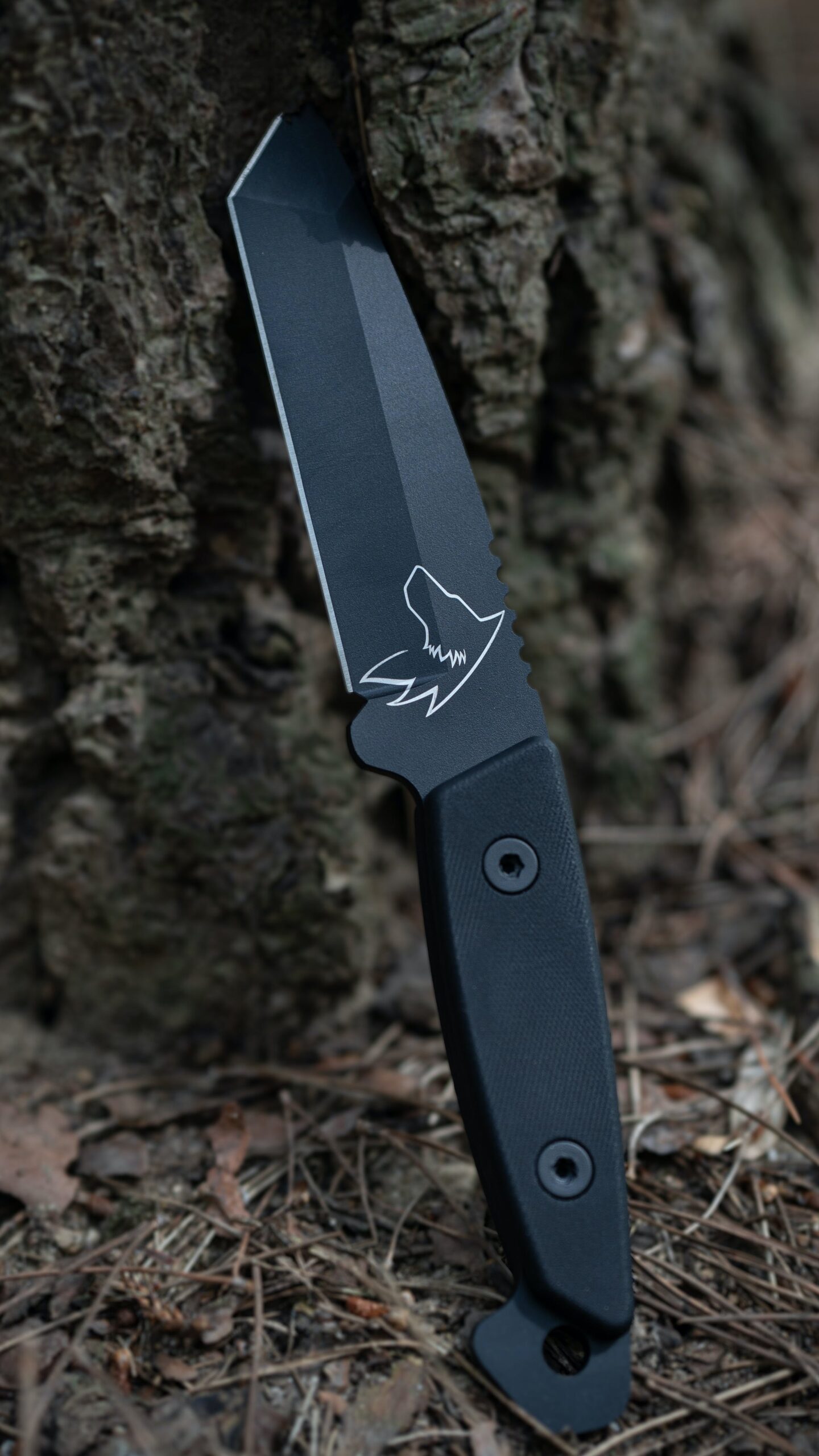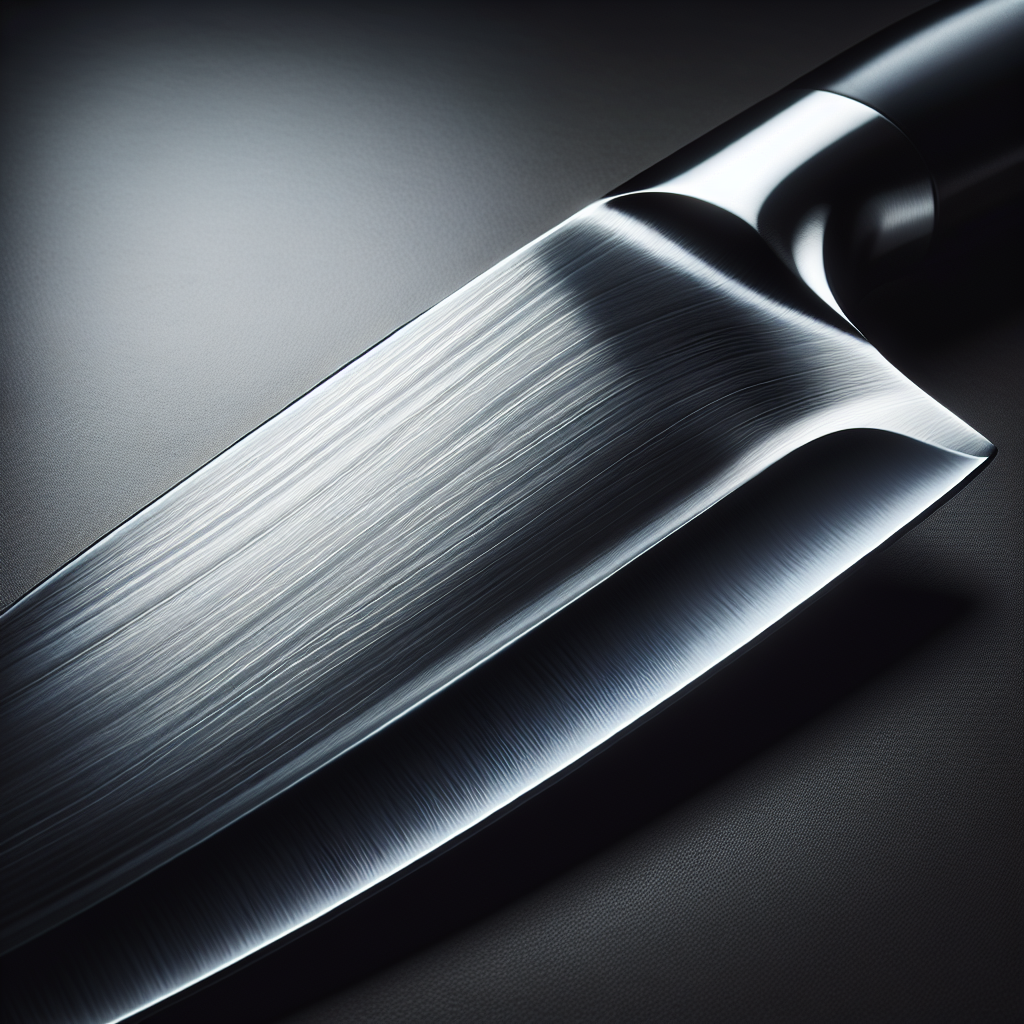If you’re serious about honing your culinary skills and becoming a kitchen pro, then taking care of your knives is an essential part of the journey. In this article, we’ll walk you through the fundamentals of knife care, covering everything from proper cleaning techniques to sharpening methods and smart storage solutions. With Tastepan’s expert advice and easy-to-follow instructions, you’ll be equipped to keep your blades in tip-top shape, ensuring seamless chopping, slicing, and dicing in your culinary adventures. So let’s roll up our sleeves and dive into the world of knife care 101: cleaning, sharpening, and storage.

Cleaning
Keeping your knives clean is essential for maintaining their performance and longevity. There are two main types of cleaning you should incorporate into your knife care routine: regular cleaning and deep cleaning.
Regular Cleaning
Regular cleaning should be done after each use to prevent food residue from building up on the blade. To clean your knife, simply rinse it under warm water and use a mild dish soap to remove any dirt or stains. Make sure to avoid using abrasive sponges or harsh chemicals that can damage the blade.
After washing, dry your knife thoroughly with a clean towel to prevent any water spots or rust from forming. Remember to pay extra attention to the handle and any crevices where food particles can get trapped.
Deep Cleaning
Deep cleaning is a more thorough method of cleaning that should be done on a regular basis to remove any tough stains, odors, or buildup from your knife. To deep clean your knife, start by creating a solution of warm water and dish soap or a mild cleaning agent.
Next, submerge your knife in the solution and let it soak for a few minutes. Gently scrub the blade with a soft sponge or brush to remove any stubborn stains or residue. Pay close attention to the handle and pivot area as well.
After cleaning, rinse the knife thoroughly with water and dry it completely. To prevent any potential rusting, you can also apply a thin coat of mineral oil to the blade before storing it.
Cleaning Different Types of Knives
Different types of knives may require slightly different cleaning techniques. For example, stainless steel knives are generally dishwasher safe and can be cleaned using the regular cleaning method mentioned earlier.
However, for high-carbon steel knives, it is recommended to wash them by hand to prevent the blades from tarnishing or becoming dull. Additionally, ceramic knives should always be washed by hand as they are more fragile and prone to chipping in the dishwasher.
Regardless of the type of knife you have, always refer to the manufacturer’s instructions for the best cleaning practices to ensure the longevity and performance of your knives.

Sharpening
Keeping your knives sharp is crucial for effortless cutting and precision in the kitchen. Here, we will discuss when to sharpen your knives, different methods of sharpening, and how to sharpen different types of knives.
When to Sharpen
The frequency of sharpening your knives will depend on how often you use them and the type of knife. As a general rule, it is recommended to sharpen your knives every 3-6 months for regular home use. However, if you use your knives extensively, you may need to sharpen them more frequently.
You can determine if it’s time to sharpen your knife by performing a simple test. Hold a sheet of paper and try to slice through it with your knife. If the blade easily cuts through the paper without tearing or snagging, your knife is still sharp. However, if the blade fails to cut smoothly and starts to tear or catch on the paper, it’s time for a sharpening.
Different Methods of Sharpening
There are various methods of sharpening knives, ranging from sharpening stones to electric sharpeners. Here are some common methods:
-
Sharpening Stones: Sharpening stones, also known as whetstones, are traditional tools used to sharpen knives. They come in different grit levels, and the higher the grit, the finer the sharpening. To use a sharpening stone, moisten it with water or oil and hold the knife at a specific angle. Then, move the blade back and forth across the stone, starting from the base and working towards the tip, alternating sides.
-
Honing Rod: A honing rod, also called a sharpening steel, is used to straighten the edge of the knife between sharpenings. It does not actually remove any metal but helps maintain the sharpness of the blade. To use a honing rod, hold it upright and at a slight angle. Run the knife blade along the rod, starting from the base to the tip, while maintaining a consistent angle and pressure.
-
Electric Sharpeners: Electric sharpeners are convenient and easy to use. They typically feature several sharpening stages, including coarse and fine grits, to achieve the desired sharpness. Simply follow the instructions provided with your specific electric sharpener for optimal results.
Sharpening Different Types of Knives
When sharpening different types of knives, it’s crucial to consider their blade material and design. For instance:
-
Stainless Steel Knives: Stainless steel knives are relatively easy to sharpen and can be sharpened using any of the methods mentioned above. Just ensure that you select the appropriate grit level and maintain a consistent angle while sharpening.
-
High-Carbon Steel Knives: High-carbon steel knives require extra care when sharpening. It is recommended to use sharpening stones or professional sharpening services to prevent any damage to the blade.
-
Serrated Knives: Serrated knives usually have a scalloped or saw-like edge. Unlike straight-edged knives, serrated knives cannot be sharpened using traditional methods. Instead, it is best to use a professional sharpening service or an electric sharpener specifically designed for serrated blades.
Remember to always follow the manufacturer’s guidelines and recommendations when sharpening your knives to ensure optimal results.

Storage
Proper storage is essential for keeping your knives safe, protecting the blade’s edge, and preventing accidents. In this section, we will discuss choosing the right storage option, proper knife placement, and the use of knife guards and sheaths.
Choosing the Right Storage Option
There are several options available for storing your knives, each with its own advantages and considerations. Here are some common storage options:
-
Knife Blocks: Knife blocks are a popular choice for storing knives as they provide easy access and protect the blade from damage. Look for a knife block with slots that are appropriately sized for your knives and ensure that the block is stable and securely holds the knives in place.
-
Magnetic Knife Strips: Magnetic knife strips are a space-saving and visually appealing storage option. They allow you to display your knives while keeping them easily accessible. When choosing a magnetic knife strip, make sure it has sufficient magnetic strength to securely hold your knives.
-
Knife Rolls or Cases: Knife rolls and cases are ideal for those who need to transport their knives or have limited countertop space. These storage options usually come with individual compartments or pockets to keep each knife protected and separated. Look for a roll or case made of durable materials that provide adequate cushioning and protection.
-
Drawer Inserts: Drawer inserts are a practical way to store knives while keeping your countertop clutter-free. They help organize your knives and protect them from damage caused by loose utensils in the drawer. When using a drawer insert, ensure that the knives are securely held in place and do not slide around.
Proper Knife Placement
Regardless of the storage option you choose, proper knife placement is crucial to ensure safety and prevent damage. When placing your knives:
- Align the blade with the slot or sheath to prevent the edge from coming into contact with other knives or hard surfaces.
- If using a knife block, insert the knives with the blade facing upward to minimize the risk of accidental cuts.
- When using a magnetic strip, ensure that the knives are securely attached and do not overlap or touch each other, which can cause damage to the blade.
By following these simple placement practices, you can maintain the sharpness and condition of your knives while reducing the risk of accidents.
Knife Guards and Sheaths
Knife guards and sheaths are additional accessories that provide extra protection for your knives, especially during storage or transport. They act as a barrier between the blade and any potential objects that could cause damage or injury.
Knife guards are usually made of plastic or silicone and can be slipped over the blade to cover it entirely. They come in various sizes to accommodate different knife lengths and shapes. Knife sheaths, on the other hand, are often made of sturdy materials like leather, nylon, or plastic and provide more substantial protection.
When using knife guards or sheaths, ensure that the knife is clean and dry before inserting it. This helps prevent moisture or dirt from being trapped, which can lead to rust or corrosion.
In conclusion, proper cleaning, sharpening, and storage are essential for maintaining the performance and longevity of your knives. By incorporating these knife care practices into your routine, you can ensure that your knives stay sharp, safe, and ready to tackle any culinary challenge. Remember to follow the specific guidelines for your knives and always prioritize safety when handling sharp objects. Happy cooking!

